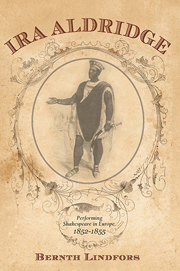Book contents
- Frontmatter
- Contents
- List of Illustrations
- Acknowledgments
- Abbreviations
- Introduction
- 1 Making Up a Company
- 2 Brussels
- 3 Navigating up the Rhine
- 4 Moving into the Interior
- 5 Berlin
- 6 On to Vienna
- 7 Hungarian Rhapsodies
- 8 Comparisons and Contrasts
- 9 Personal and Personnel Matters
- 10 Hungarian Rap Sheet
- 11 Prussia, Germany, Switzerland
- 12 Homeward Bound
- 13 Interpreting Shakespeare
- 14 Further Travels
- Appendixes
- Notes
- Selected Bibliography
- Index
- Miscellaneous Endmatter
4 - Moving into the Interior
Published online by Cambridge University Press: 05 December 2013
- Frontmatter
- Contents
- List of Illustrations
- Acknowledgments
- Abbreviations
- Introduction
- 1 Making Up a Company
- 2 Brussels
- 3 Navigating up the Rhine
- 4 Moving into the Interior
- 5 Berlin
- 6 On to Vienna
- 7 Hungarian Rhapsodies
- 8 Comparisons and Contrasts
- 9 Personal and Personnel Matters
- 10 Hungarian Rap Sheet
- 11 Prussia, Germany, Switzerland
- 12 Homeward Bound
- 13 Interpreting Shakespeare
- 14 Further Travels
- Appendixes
- Notes
- Selected Bibliography
- Index
- Miscellaneous Endmatter
Summary
Five days after finishing their engagement in Karlsruhe, Aldridge and his company opened in Othello about a hundred miles northeast at Würzburg. The day before they took the stage, a local paper published an excerpt from a review in the Augsburger Allgemeine Zeitung giving information on Aldridge's unusual background and extolling his performance as the fiery Moor. The reviewer was quoted as saying, “I do not believe that Shakespeare's intentions regarding the character of Othello have ever found a better interpreter, nor that they ever will.” This kind of publicity drew a large crowd to the theater, and they were pleased with what they saw there. The papers reported that “the reputation which preceded [Aldridge] was not exaggerated,” for “the impression that his great acting style and characterization made … was surely mightier and more gripping than any that has ever been seen here.”
Two nights later Aldridge's troupe reappeared in Macbeth and The Padlock with similar success, Aldridge being praised for the “perfection” of his interpretation of “indisputably one of the most difficult character portraits in the Shakespearean tragedies” and for the “fresh and lively colors” with which he “painted the good-natured, weepy Negro.” However, the playbill for that evening reveals an odd change in the cast that performed Macbeth. Back in Elberfeld, Cologne, and Bonn in late August and early September, when twelve members of Aldridge’s truncated troupe were attempting to mount all five acts of this play, Banquo was played by Stephenson, Lady Macbeth by Mrs. Stephenson, and the three witches by supernumeraries who do not appear to have been regular members of the traveling company.
- Type
- Chapter
- Information
- Ira AldridgePerforming Shakespeare in Europe, 1852-1855, pp. 55 - 65Publisher: Boydell & BrewerPrint publication year: 2013

